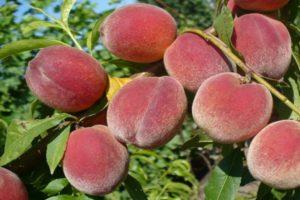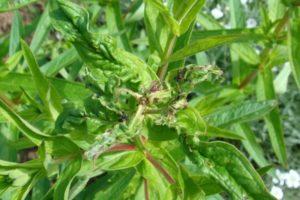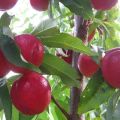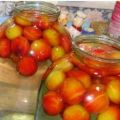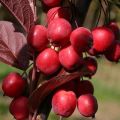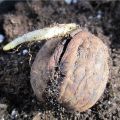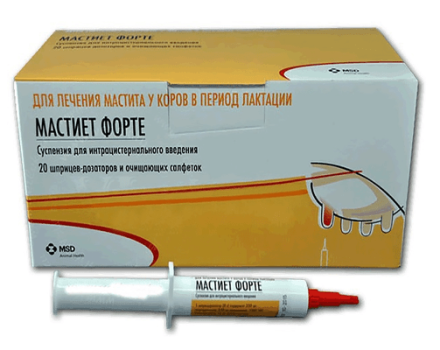How to properly grow nectarine, variety selection, planting and care, breeding methods
The southern fruit nectarine is prized for its sweet taste, ease of maintenance and long shelf life. Asking the question of how to grow nectarine correctly, one should understand all the nuances in order to get fruits with high taste.
General description and characteristics
Nectarines grow on spreading trees 5-7 m high. The trees begin to bloom immediately after the first leaves form. On the branches, pink inflorescences are formed, which give the plant a decorative appearance. Fruits form on one-year-old branches and change color from greenish-yellow to orange. Fruit diameter reaches 4-5 cm, subject to proper care and favorable climatic conditions.
Plant varieties
There are several varieties of nectarines, which differ in terms of fruit ripening, yield and other characteristics. According to the timing of fruiting, early, middle and late varieties are distinguished. When choosing a suitable variety for growing, it is worth familiarizing yourself with the common types among experienced gardeners.
Early varieties
Planting early maturing trees is recommended in regions with a short warm period. The following early varieties are popular among gardeners:
- Crimson Gold. A hybrid, medium-sized variety with a high yield. The fruits are large in size and weigh 120-130 g. The pulp of the fruit is tender and juicy.
- Big Top. The variety bears large oval fruits. The fruit tastes sweet and separates easily from the pits.
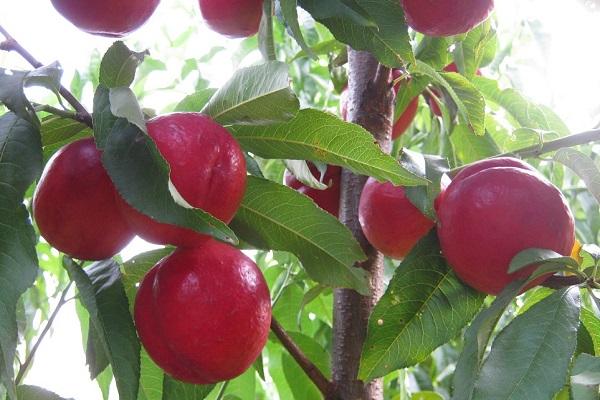
Medium varieties
Many gardeners prefer to grow medium varieties in temperate areas. Common medium-sized varieties of nectarine include:
- Wang. The variety is prized for its high yield and easy maintenance. The fruits have a delicate yellow pulp with a pronounced aroma.
- Flavor Top. A mid-season variety that bears fruits weighing 150-160 g. The main advantage of the variety is good transportability.
Late varieties
Planting late-maturing varieties is advisable in hot regions. In this category, such varieties are in demand as:
- Stark Red Gold. Trees with one crown bear symmetrical fruits with a round shape and weighing up to 200 g. The pulp is dense, easily separable from the stone. The harvest ripens in mid-August.
- Crimean.On compact plantings at the end of the summer period, fruits weighing 190 g grow. During the year, 40-50 kg of harvest can be obtained from one tree.
- Columnar. This nectarine variety grows on small trees. The fruits are formed in a thickened manner, which allows for a large harvest.

Growing nectarine
It is necessary to germinate nectarine trees with several considerations. In order for the seedlings to take root well and actively bear fruit, it is required to comply with the terms of planting in open ground, choose a suitable place for growth, process the planting material and land, plant correctly and provide nectarine care.
When to plant
The favorable landing period depends on the climatic conditions in a particular region. In the southern regions and the middle zone of the country, it is recommended to plant trees in unprotected soil in early autumn. In areas with a long winter period and in the Urals, it is better to sow seeds in the spring, after the snow melts and the risk of return frosts disappears.
In the Moscow region and adjacent regions, both autumn and spring planting are allowed, since seedlings will be able to germinate under different environmental conditions.
Site selection and preparation
Nectarine loves loamy and sandy loam soil. On heavy clay soil, trees will not take root and will not bear fruit. For planting at the dacha, you need to choose a site with deep groundwater, located on the southern side of the dacha. The precursors of nectarine should not be nightshade crops, strawberries and clovers, as planting after these plants can lead to verticilliosis.
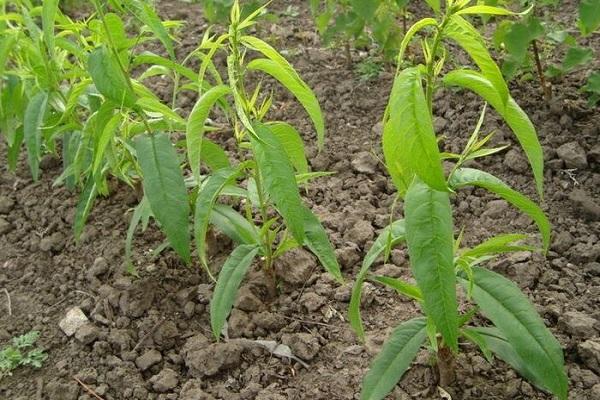
Trees should be well lit during a sunny day. Tall buildings and other plantations from which a shadow falls should not be located near the plantings. Also, you should not plant nectarine next to a peach, as the risk of contracting fungal infections will increase.
Preparing planting material
For planting in a summer cottage, you should purchase annual seedlings of a variety adapted to the climatic conditions of the growing region. It is necessary to carefully examine the planting material and make sure there are no signs of damage. The roots of young seedlings should not be dry and soft. From the inside, the color of the bark should be greenish, and at the site of inoculation, it is important that there be no sagging.
If trees are planted with a bone, then before sowing, it is necessary to disinfect the seed. For this, a low-concentrated solution of potassium permanganate is prepared, and the seeds are soaked in it for 15-20 minutes. Then the inoculum is kept in water for germination and warmed up for a day.
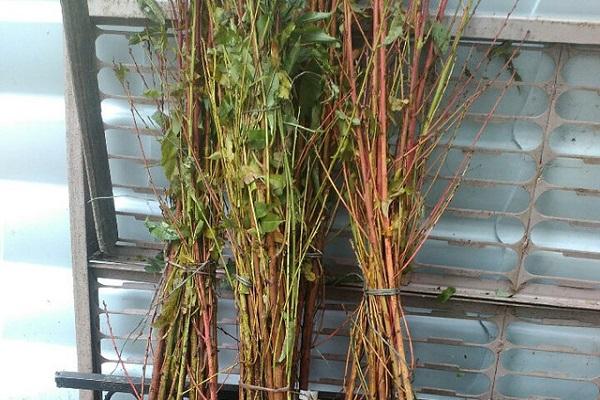
Landing technology
It is necessary to prepare the planting pit 2-3 weeks before disembarkation. The depth of the hole is determined depending on the height of the seedling. The excavated layer of soil is set aside and mixed with superphosphate and rotted compost. Then half of the resulting earthen mixture is poured in the center of the hole, forming a small slide.
A seedling is placed on a hill in a pit and the roots are carefully spread, and then the rest of the earth is poured. The grafting site of the seedling should rise 3-4 cm above the ground level. The earth is tamped from the edges of the hole to the center and watered abundantly. When the water is completely absorbed, the seedling is fixed to a peg and hilling is performed using dry soil.
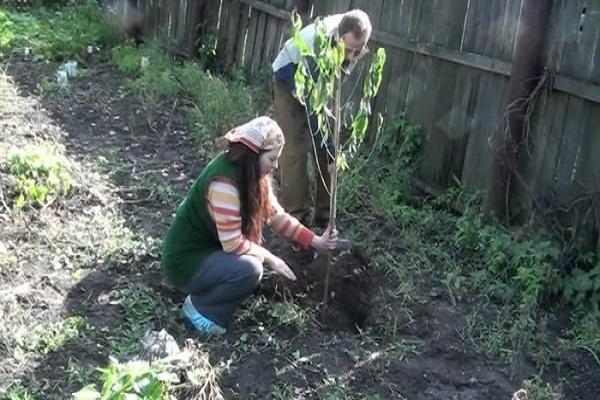
Nuances of wood care
In the course of growing nectarine in Siberia and other regions, full care is required. The implementation of agrotechnical techniques directly affects the yield of trees and the process of their development.
Watering the nectarine
Throughout the growing season, watering of nectarine should be regular and abundant. During the rest period, it is enough to moisten the ground 1-2 times a month. It is also recommended to spray the ground part.In hot weather, it is best to spray the foliage in the early morning or evening when the temperature drops slightly.
Top dressing
It is recommended to apply fertilizers to the soil every 10 days, combining organic fertilizing and mineral nutrients. A suitable organic fertilizer for nectarine is rotted manure, which is diluted 1:10 with water. Complex mineral dressings are purchased in a ready-to-use state. During the dormant period, the plantings do not need saturation with nutrients.
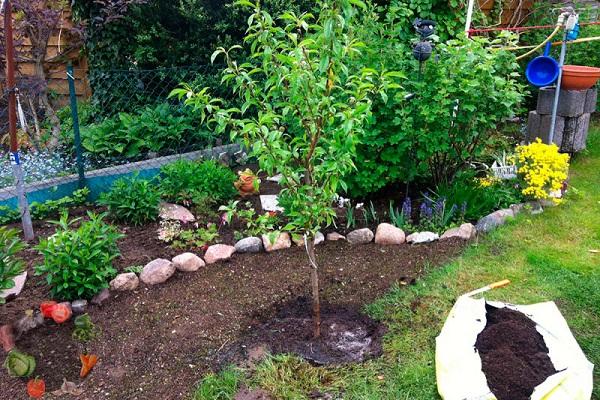
Treatment
In the middle of the spring period, preventive treatment of trees is carried out. Nectarines are sprayed on the swelling kidneys with Karbofos. The next processing is carried out at the time of forming the sheet plates. For secondary spraying, a Bordeaux liquid solution is used.
Wintering
In the fall, before the onset of a strong cold snap, foliage and plant debris are removed from the site. The area around the tree trunk is then covered with a layer of sawdust, peat or straw mulch. It is necessary to carry out mulching in dry weather in order to exclude the occurrence of rot.
Young seedlings placed in open ground in autumn need a protective shelter for the frost period. To do this, next to the plant in the ground, long slats are fixed and a bag is pulled over them. You can also use thick fabric or plastic wrap as a cover.
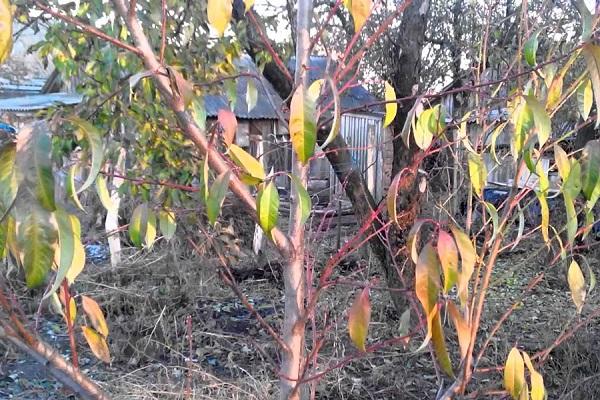
Pruning
The formation of plants is carried out to remove excess foliage, which impairs aeration and prevents the passage of sunlight to the fruits, as well as damaged branches that continue to consume nutrients from the soil.
Formative
Fruiting of nectarine occurs on annual growths, therefore, with formative pruning, it is necessary to ensure the active growth of annual shoots by thinning and shortening the branches. The first formative pruning of trees in autumn planting is required with the onset of spring, at the time of the beginning of sap flow.
Sanitary
Autumn and summer nectarine pruning is carried out for sanitary purposes as needed. It is recommended to periodically inspect the trees and, if damaged and decaying parts or abundant foliage build up, perform shaping.
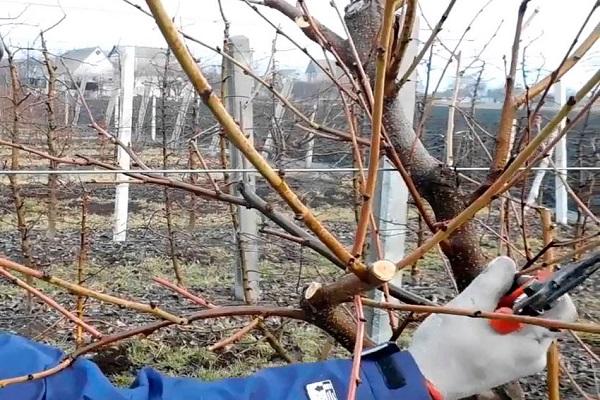
Diseases and pests of culture
Improper care or unfavorable growing conditions lead to the development of diseases. Having found signs of infection, it is necessary to take care of the trees and perform treatment. For nectarine, it is recommended to use products based on natural ingredients as an alternative to chemicals.
Among the pests for nectarine, the most dangerous are the moth, aphids, scale insects, moths, ticks and flower-eating weevils. It is allowed to remove large insects from trees by hand. In case of an invasion of a large number of parasites, treatment with insecticidal substances is required.
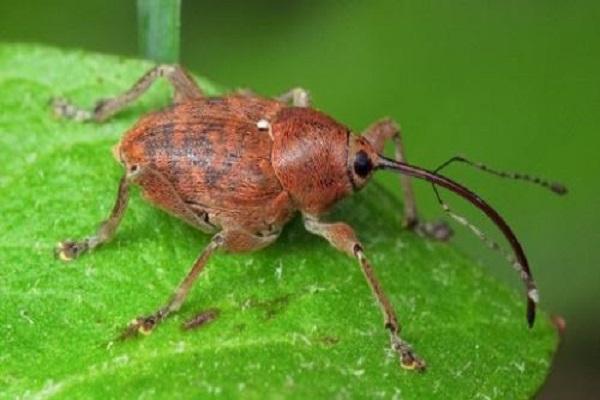
Reproduction of nectarine
You can increase the number of trees on the site by reproduction. Nectarine is planted with seeds or budding is carried out, which consists in grafting from a cultivar.
Seed
For seed reproduction, it is necessary to leave seeds from the largest and healthiest fruits. The seeds are disinfected and soaked for germination, after which they are transferred to open ground or pre-formed seedlings at home.
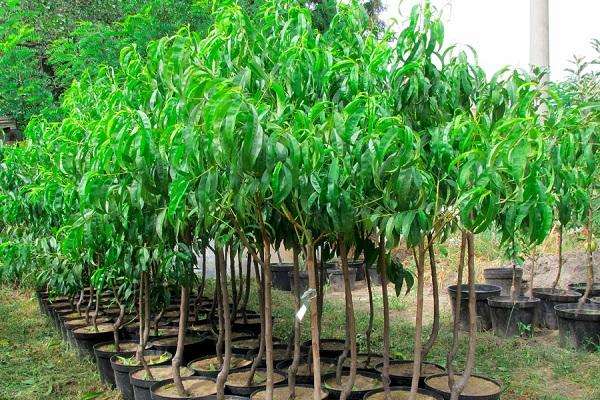
Graft
Cuttings of nectarine are grafted onto rootstocks by means of budding. Cuttings are harvested in the early morning, when the shoots are saturated with a lot of moisture. The length of the cuttings should be at least 30 cm. The lower cut of the cuttings is immersed in water and lateral growths are removed. On the trunk of a tree, previously cleaned of dirt and dust, an incision is made in the bark, under which the trim is later grafted.The vaccination site is wrapped with plastic wrap for fixation.
Features of cultivation in different regions of Russia
When planning the planting of nectarine, it is important to take into account the type of soil, weather and climatic conditions and other factors in the growing region. Depending on the surrounding conditions, the timing of planting, the need for protective treatments and the use of shelter change. It will also be useful to learn about the experience of growing fruit crops by other gardeners, which will help to avoid common mistakes and get a good harvest.
